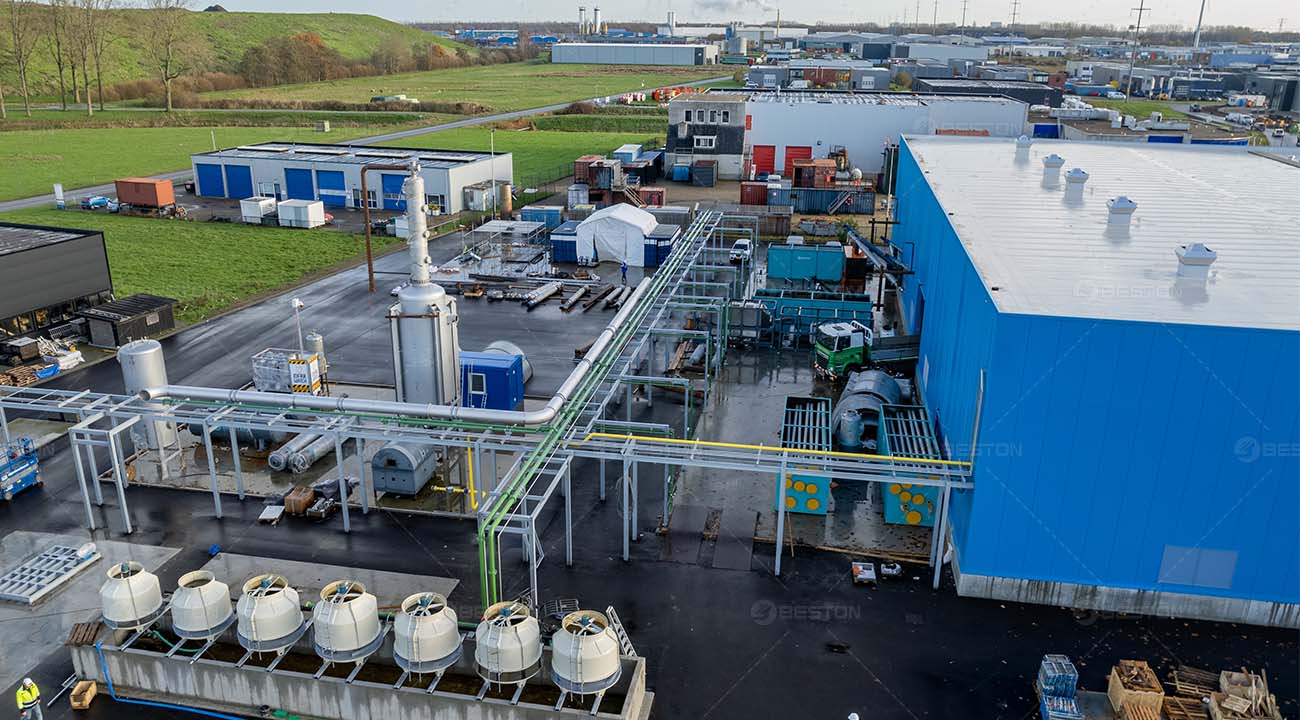Advantages of Catalytic Plastic Pyrolysis Technology
In the realm of waste management and environmental sustainability, waste pyrolysis plant technology has emerged as a promising solution, particularly in addressing the challenges posed by plastic waste. Among the various methods employed in waste pyrolysis plant, catalytic plastic pyrolysis stands out for its unique advantages and capabilities.
Understanding Catalytic Plastic Pyrolysis
Catalytic plastic pyrolysis involves the thermal decomposition of plastic waste in the presence of a catalyst, typically a zeolite or metal oxide, at elevated temperatures. This process breaks down complex polymer chains into simpler hydrocarbon compounds, which can then be further refined into valuable products such as fuels, chemicals, and feedstocks.
Key Components of Catalytic Plastic Pyrolysis
-
Feedstock Preparation: Plastic waste is first sorted, shredded, and dried to remove any contaminants or moisture that may interfere with the pyrolysis process.
-
Reactor System: The pyrolysis machinery, where pyrolysis takes place, is equipped with a catalyst bed to facilitate the decomposition of plastic molecules into smaller hydrocarbons.
-
Product Recovery: After pyrolysis, the resulting products, including gases, liquids, and solids, are separated and collected for further processing or utilization.
Advantages of Catalytic Plastic Pyrolysis Technology
1. Enhanced Product Yield
Catalytic plastic pyrolysis typically yields higher quantities of valuable products compared to conventional thermal pyrolysis methods. The presence of a catalyst promotes more complete decomposition of plastic polymers, leading to increased yields of liquid fuels and chemical feedstocks.

2. Improved Product Quality
The use of catalysts in waste plastic pyrolysis plant enhances the quality and purity of the resulting products by facilitating selective cracking and deoxygenation reactions. This results in fuels and chemicals with lower sulfur, nitrogen, and oxygen content, making them suitable for a wide range of applications, including transportation fuel blending and petrochemical manufacturing.
3. Energy Efficiency
Catalytic pyrolysis processes require lower operating temperatures and shorter residence times compared to non-catalytic methods, resulting in reduced energy consumption and operating costs. The ability to operate at milder conditions also minimizes the risk of thermal degradation and undesired side reactions, thereby improving process efficiency and product yields.
4. Waste Minimization
By converting plastic waste into valuable products, catalytic plastic pyrolysis helps divert significant quantities of waste from landfills and incineration facilities, contributing to waste reduction and resource recovery efforts. This not only alleviates the burden on waste management infrastructure but also reduces the environmental footprint associated with plastic disposal.
5. Versatile Feedstock Options
Catalytic plastic pyrolysis technology is compatible with a wide range of plastic feedstocks, including mixed plastics, contaminated plastics, and plastic waste streams with varying compositions. This versatility enables the utilization of diverse feedstock sources, including post-consumer waste, industrial byproducts, and plastic packaging materials, maximizing resource recovery and value generation.
6. Environmental Benefits
The adoption of catalytic plastic pyrolysis technology offers significant environmental benefits by mitigating the negative impacts of plastic pollution and reducing reliance on fossil fuels. By converting plastic waste into renewable fuels and chemicals, this technology helps mitigate greenhouse gas emissions, conserve natural resources, and promote a circular economy approach to waste management.
Conclusion
In conclusion, catalytic plastic pyrolysis technology offers a promising approach to tackling the global challenge of plastic waste pollution while creating economic opportunities and promoting environmental sustainability. By leveraging the unique advantages of catalytic conversion, waste pyrolysis plant facilities can effectively convert plastic waste into valuable products, minimize environmental impacts, and contribute to a more circular and resource-efficient economy.

Comments
No comments yet. Be the first to react!